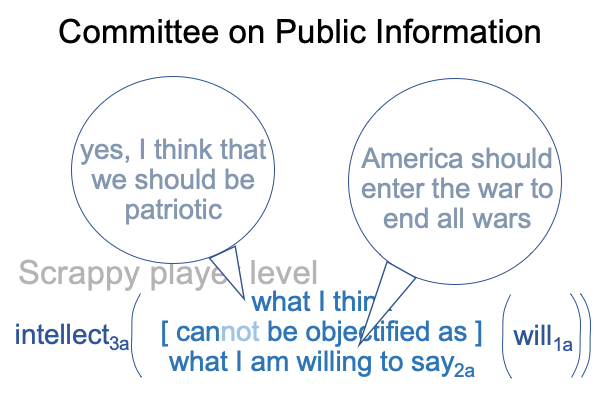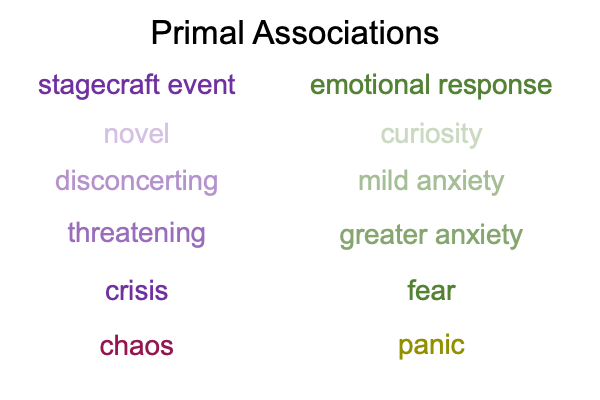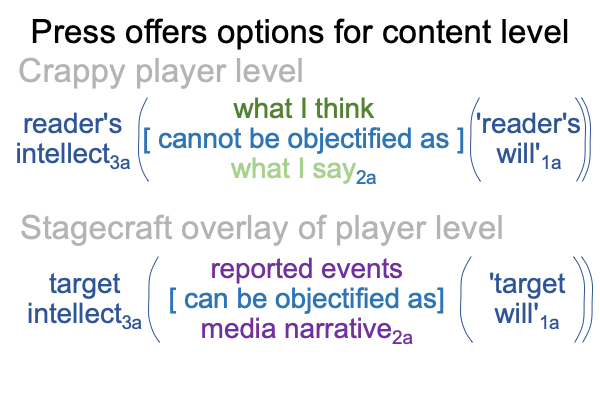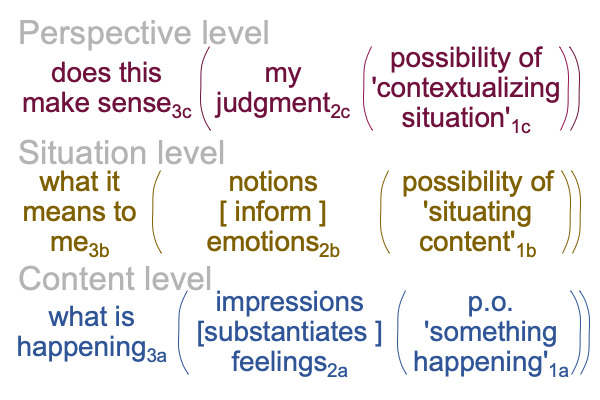0655 Well, the Committee on Public Information provides an early assessment for operation sheepskin.
Here is a picture.

0656 How far can this manipulation go?
The manipulation can go as far as the one who cooks the books3c needs.
Indeed, during the Second World War, The Second Battle of the Enlightenment Gods, the Hot War Among Fraternal Ideologies (1938-1945), the ones who cook the books3c come one step closer to Fuller’s concept of the relativist one3c, as the one outside of all jurisdictions. Public-private partnerships enter the picture in significant ways. Plus, these book-cooking collaborations3c set the groundwork for the Third World War, The Third Battle of the Enlightenment Gods, the Cold War Among Materialist Ideologies (1945-1989).
0657 But, before I go to chapter eight, I want to linger in the claim that Stiles makes at the end of chapter seven. Stiles connects the way that the five pillars work to the architecture of the human brain. This connection provides an excuse for a review.
0659 How does Stiles explain this connection?
Here is a picture of the intensity of a stagecraft event with the corresponding emotional response.

This is a picture of stimulus (left column) and response (right column).
0660 How should I diagram this portrayal of cause and effect?
To start, the empirio-normative judgment2c targets the reader’s intellect3a and will1a.
Thus, the cause is press reports overlaying the content level of the post-truth interscope.
The effect is how the reader’s intellect3a and will1a responds.

0661 The reported events and the media narrative2a work coherently, because any reports that muddle the narrative are selectively omitted. However, the naive reader does not know this. The naive reader presumes that the events and narrative are true. The post-truth reader does not make that assumption. The post-truth reader knows that material most likely has been omitted, even by media outfits who proclaim themselves to be “trusted sources”.
0662 Nevertheless, the psychology of what I think comes into play, along with the derivative character of what I say.
Recall that the premodern scholastics develop the concepts that go into the postmodern scholastic interscope for how humans think.
Impressions2a and feelings2a occupy the content level.
Phantasms2b and emotions2b occupy the situation level.
Decisions2c and judgments2c occupy the perspective level.
All three levels contribute to what I think in the post-truth interscope.

0663 In the stimulus-response scenario, emotions2b takes center stage for how humans think.
If Stiles is correct, the normal context of targeting the intellect3a and the potential of targeting the will1a aims to influence the actuality of emotions2a in what the scrappy player thinks2a.
